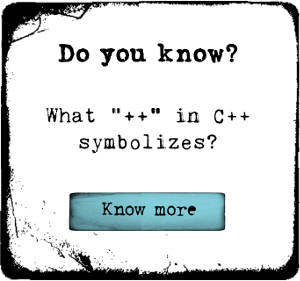From Collections to Streams in Java 8 Using Lambda Expressions

Pluralsight
Course Summary
This course shows the new patterns introduced in Java 8, based on lambda expressions, the functional interfaces, the Collection Framework and the Stream API.
-
+
Course Description
Java 8 brought many new patterns to build efficient and clean applications. In this course, we cover one most important new thing: lambda expressions. Lambdas are a nice thing, but would be useless without new patterns to process data. These new patterns have been added to the Collection Framework, and to a the new Stream API. This course quickly explains what the map / filter / reduce pattern is about, and why is has been added to the Stream API. This new API is precisely described: how it can be used to efficiently process data and how it can be used in parallel. Caveats and corner cases are also shown.
-
+
Course Syllabus
Lambda Expressions and Functional Interfaces- 47m 48s
—Introduction to the Course 3m 7s
—What Are You Going to Learn in This Course? 2m 9s
—Agenda of the Course 1m 31s
—Who Are You? What Should You Know to Follow This Course? 1m 40s
—Agenda of This Module 1m 5s
—Lambda Expression: Introduction, Instances of Anonymous Classes 3m 24s
—Lambda Expression: Passing Code as a Parameter 2m 9s
—Let Us Write Our First, Simple Lambda Expressions 3m 2s
—Lambda Expression: Remarks and Precisions 1m 51s
—Method References: A First Example with an Instance Method 2m 29s
—Method References: A Second Example with a Static Method 2m 9s
—Method References: The System.out.println Pattern 1m 32s
—How to Create New API: Default and Static Methods in Interfaces 2m 6s
—Live Coding Introduction: The Comparator Example 0m 53s
—Implementing a Comparator with Lambda Expressions 2m 17s
—Comparing by Age, Last Name, and First Name 0m 57s
—Refactoring the Comparison with a Key Extractor 2m 0s
—Implementing the Comparator.comparing Static Method 2m 48s
—Making the Key Extractor Generic, Returning Comparable Objects 2m 3s
—Chaining Comparators with the thenComparing Default Method 2m 7s
—Writing the Comparator.thenComparing Implementation 1m 36s
—Writing the Final Comparator Creation and Chaining Pattern 2m 47s
—Wrap-up of the Module 1m 56sWriting Data Processing Functions with Lambdas in Java 8- 46m 10s
—Introduction to the Module 1m 34s
—What Is a Functional Interface? The Predicate Example 2m 1s
—How to Implement a Functional Interface with a Lambda Expression 2m 7s
—How Does the Compiler Recognize the Type of a Lambda Expression? 3m 52s
—A Lambda Is Still an Interface with Usable Methods 0m 35s
—Functional Interface: The Complete and Exact Definition 3m 24s
—How to Use the @FunctionalInterface Annotation 2m 50s
—The Four Categories of the java.util.function Package 1m 8s
—First Category: The Consumers 0m 59s
—Second Category: The Supplier 1m 24s
—Third Category: The Functions 2m 31s
—Fourth Category: The Predicates 1m 8s
—Functional Interfaces for Java Primitive Types 1m 29s
—Introduction to the Live Coding Section: The Predicate Example 1m 34s
—Writing and Using a First, Simple Predicate Lambda Expression 1m 49s
—Chaining Predicates with the AND Boolean Operation 1m 44s
—Adding a and() Method on the Predicate Functional Interface 1m 35s
—Implementing the and() Default method on the Predicate Interface 3m 44s
—Adding a or() Default Method on the Predicate Interface 3m 12s
—Creating Predicates with a Static Call on a Functional Interface 2m 41s
—Making the isEqualsTo() Method Generic of the Predicate Interface 1m 32s
—Live Coding Wrap-up 1m 14s
—Module Wrap-up, Presentation of the Next Module 1m 53sData Processing Using Lambdas and the Collection Framework- 45m 54sImplementing Map Filter Reduce Using Lambdas and Collections- 51m 45sThe Stream API, How to Build Streams, First Patterns- 49m 38s





